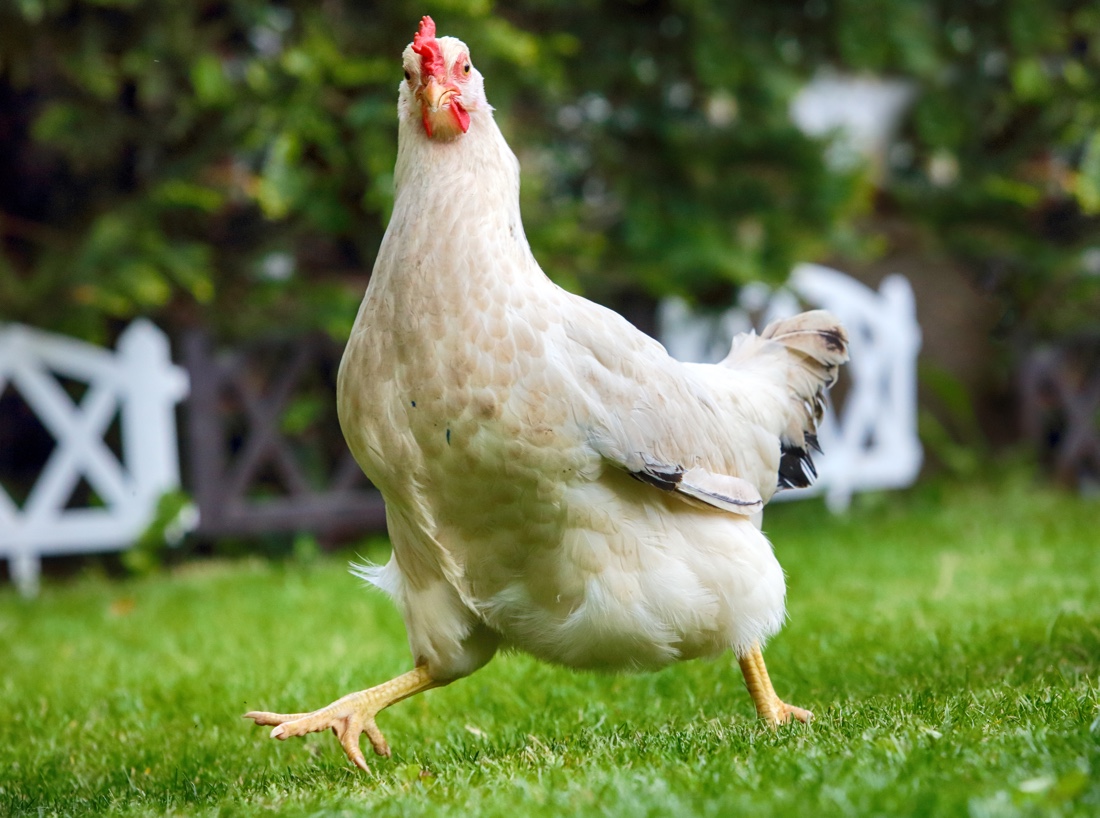Future Humans May Call Us the 'Chicken People,' and Here's Why

Long-lost cultures are sometimes known by the goods they leave behind. The Neolithic Corded Ware people of Europe, for example, got their name from the distinctive decorated pottery they made. If today's humans ever get a similar moniker, we might be known as the Chicken People.
Domesticated chickens, it turns out, could be a signpost for future archaeologists that screams, "Humans were here!" The total weight of the species Gallus gallus domesticus not only exceeds the weight of all wild birds combined, domesticated chickens also carry distinctive signs of industrialized farming in their very bones.
"They're an example, really, of how we've changed the biosphere to suit our needs as humans," said Carys Bennett, the lead author of a new study published today (Dec. 11) in the journal Royal Society Open Science that argues that chicken-bone fossils may mark a new geological epoch, the Anthropocene. [7 Bizarre Ancient Cultures That History Forgot]
Chickens conquer the world
Bennett is a geologist, and she and her colleagues are interested in finding markers of a potential new era of geological history. The Anthropocene is a still-controversial epoch defined by humans as the major drivers of Earth's environment. One key requirement of an epoch, Bennett told Live Science, is having an "index fossil." Index fossils are fossils that can be found around the world in a particular era and are unique enough to mark that period of time as different from what came before and after.
Chickens might just be that index fossil for the Anthropocene. The numbers tell the story: There are approximately 21.4 billion domesticated chickens alive on the planet today, making them by far the most numerous birds on the planet. Their combined weight, or biomass, is around 11 billion lbs. (5 billion kilograms). And chickens are found worldwide. Humans consumed an estimated 62 billion of them in 2014 alone.
Many chicken bones end up in landfills, Bennett and her colleagues wrote, which are oxygen-poor environments good for preserving organic matter. That means that chickens are quite likely to end up preserved in the fossil record.
Changing chickens
If future archaeologists do indeed find fossilized remains of today's chickens, they'll likely realize quickly that the creatures they've discovered weren't built by nature. Bennett and her team analyzed the leg bones of chickens from a database of animal bones that had been found in London. The bones dated back as far as the Roman Era, which began in A.D. 43. The earliest chickens were small, much like their wild ancestor, the red jungle fowl (Gallus gallus). Around the year 1340, the researchers found, domesticated chickens got a little heftier, likely the result of experiments in selective breeding at the time.
Sign up for the Live Science daily newsletter now
Get the world’s most fascinating discoveries delivered straight to your inbox.
Around 1950, though, chicken-bone measurements really started to change. The leg bone of a modern juvenile broiler chicken is three times as wide and two times as long as that of a wild red jungle fowl. A chicken today is a good four or five times larger than a chicken of the same species in 1957.
"It's astonishing," Bennett told Live Science.
Today's monster chickens are no accident; they are the result of a 1948 supermarket competition called the "Chicken of Tomorrow" that called on breeders to make bigger, faster-growing fowl. Today's broiler chickens grow so rapidly that their bones are more porous than their wild counterparts. They are typically slaughtered by 7 weeks of age and don't survive well if allowed to grow larger, Bennett and her colleagues wrote.
Future geochemists will also be able to detect the grain-based diets of today's chickens in the molecules that build their bones, Bennett said. And if they can sequence any DNA from chicken-bone fossils, they'll find variations in some genes, such as a mutation that allows domesticated chickens to mate year-round rather than seasonally.
The International Commission on Stratigraphy, which is made up of a group of scientists from around the world, is responsible for defining periods, epochs and ages that researchers use to understand Earth's history. The Anthropocene has yet to be officially adopted, Bennett said, and the process is likely to take years. There are signs, however, that the Anthropocene may well be visible in the rock record for millennia. Scientists in 2014, for example, reported a new "rock," plastiglomerate, or a mix of lava and melted plastic found on some beaches. Researchers have also argued that sediments will hold other telltale signs of industrialized society, including lead from leaded gasoline, byproducts from the burning of fossil fuels and nitrogen from fertilizers. Chickens could join this mix, Bennett said.
"As the population of chickens is going up, so is the human population, so is the amount of plastic we're using, the amount of fossil fuels we're burning," she said. "So the timing fits in pretty well with what scientists are looking at as the boundary of the Anthropocene, which would be 1950."
- 6 Ways to Feed 11 Billion People
- 8 Ways Global Warming Is Already Changing the World
- Top 9 Ways the World Could End
Originally published on Live Science.

Stephanie Pappas is a contributing writer for Live Science, covering topics ranging from geoscience to archaeology to the human brain and behavior. She was previously a senior writer for Live Science but is now a freelancer based in Denver, Colorado, and regularly contributes to Scientific American and The Monitor, the monthly magazine of the American Psychological Association. Stephanie received a bachelor's degree in psychology from the University of South Carolina and a graduate certificate in science communication from the University of California, Santa Cruz.









